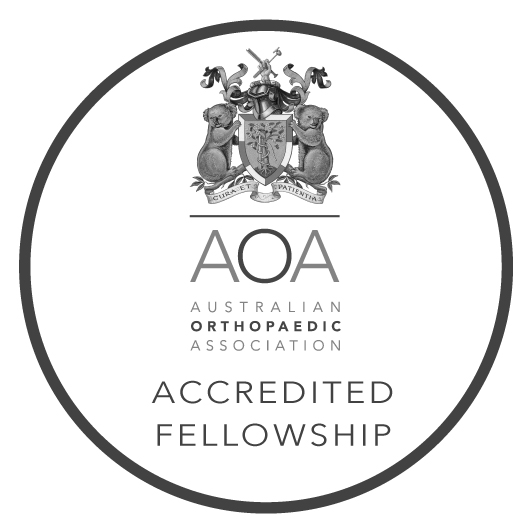Corin Optimised Total Hip Replacement
Patient Optimised Hip Replacement
Every patient moves differently, and now surgeons can take this into account when performing hip replacement surgery thanks to a new technology from Corin Group that helps determine the best positioning of an implant and its components based on how patients really move during daily activities.
Corin announced the U.S. launch of its Optimized Positioning System (OPS) System at the American Academy of Orthopaedic Surgeons (AAOS) in San Diego. The technology may lead to one of the most significant changes to the way hip replacements are performed in more than 30 years.
'This new technology challenges the traditional approach of placing implants in generic safe zones,' said James Huddleston III, MD, associate professor of orthopaedic surgery at the Stanford University Medical Center. 'Now we can get more specific and tailor the implant position for each patient. This should help reduce the dislocation rate and even possibly reduce wear.'
Utilizing pre-operative functional simulation and planning and a unique intra-operative positioning system that employs 3D printing and laser guidance, OPS helps surgeons determine the best position and orientation for a hip implant based on specific patient anatomy and movement.
'While hip replacement surgery is considered one of the most successful operations in medical history, we are always looking for ways to improve it, particularly ways we can improve function and performance and reduce the potential for dislocation and premature wear of bearing surfaces,' said Douglas Dennis, MD, an orthopaedic surgeon in Denver, CO. 'This new technology may be an advance that helps us do this.'
More than 40,000 procedures have now been done world-wide.
'No two patients are the same. We are offering a patient-specific solution that gives the surgeon the information and tools necessary to enable an optimal hip replacement procedure,' said Paul Berman, President Corin USA.
Every patient moves differently and a total hip replacement should be optimized to account for this.
Research has demonstrated that the pelvis rotates extensively in the sagittal plane. These pelvic rotations are patient specific, and change the functional orientation of the acetabulum during different activities of daily living.
Historically, optimal cup orientation has been defined by generalised '˜safe zones' advocating 35 to 45 degrees of inclination and 5 to 25 degrees of anteversion. Further to this, there is currently no consensus in the literature as to what reference frame to use when making these measurements.
Complications associated with malorientation of the acetabular component are widely published:
- Increased dislocation rate
- Component impingement
- Edge loading
- Squeaking
- Accelerated bearing surface wear
- Osteolysis and loosening.
Corin Optimized Positioning System, OPS™, consists of two parts:
- Step 1: a dynamic, functional and pre-operative simulation
- Step 2: a patient-specific delivery system
Step 1 - a dynamic, functional and patient specific pre-operative simulation
This takes the patient through a range of daily activities to investigate the relationship between their spine, pelvis and femur. The process starts with medical imaging, capturing the unique anatomical geometry of each patient. Inputs are then analysed by an engineering team using specialized software. The simulation then models the predicted in vivo behaviour of the implants to optimize the orientation of the acetabular component. A surgeon report provides detailed information to assist in optimizing the outcome for each patient. Once the orientation is decided a unique guide is 3D printed.
Step 2 - a patient specific delivery system
Before reaming, the unique 3D guide is placed into the acetabulum enabling the chosen orientation to be precisely reproduced, irrespective of the patient's position on the operating table. During cup impaction the surgeon uses a simple laser guided system to quickly and accurately achieve the optimized orientation.
OPS™ provides a dynamic simulation and a personalized solution in a simple, quick and accurate way. This gives the surgeon the information required to tailor each surgery for each patient.
There have been a number of presentations at scientific meetings and publications on these areas of concern and on the OPS™ technology.
Studies and presentations to support OPS™:
- AK AFNO Poster COA 2019
- Pelvic tilt in the standing, supine and seated positions
- Clinical accuracy of a novel patient specific instrumentation system (Trinity OPS) for acetabular cup orientation
- Clinical accuracy of a patient specific guide for delivering a planned femoral neck osteotomy
- An investigation into the dynamic loading of ceramic-on-ceramic total hip replacements and its relevance to squeaking
- Patient-specific instrumentation improves the accuracy of acetabular component placement in total hip arthroplasty
- Native Anteversion in the Total Hip Replacement Population
- The clinical relevance of functional pelvic tilt: A preoperative analysis of 2612 total hip replacement patients
- AP X-rays are as accurate as CT for assessing acetabular component orientation using 3D/2D matching
- AK AFNO Poster COA 2019






